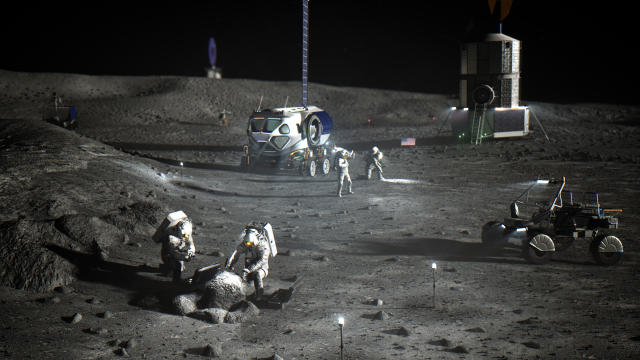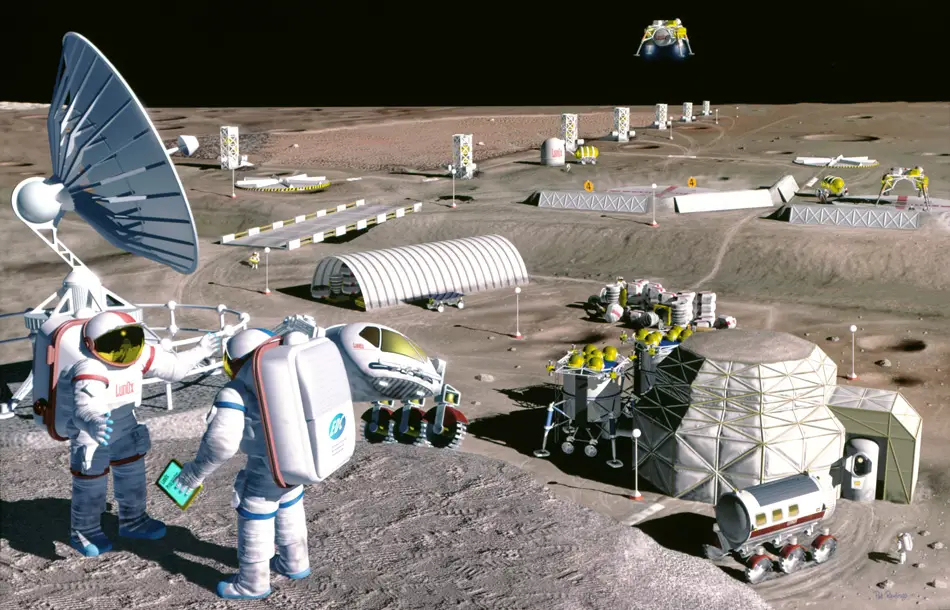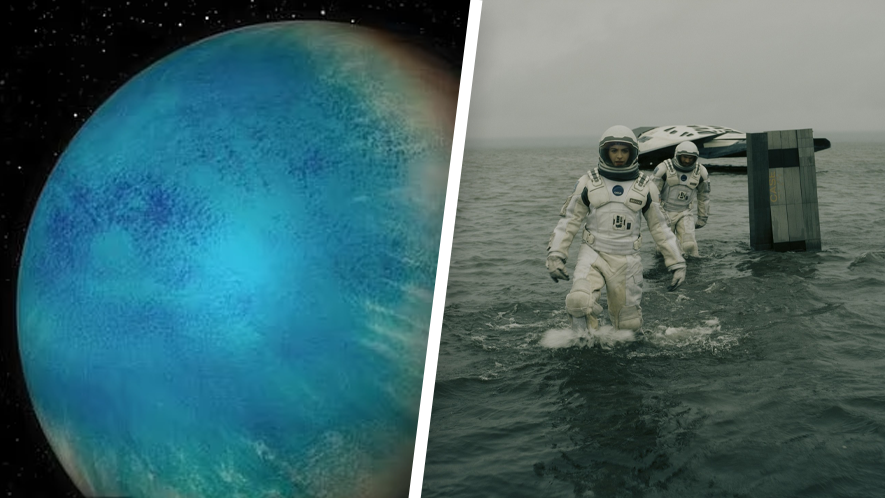After more than 12 years of exploring Mars, NASA’s Curiosity rover has developed significant wear and tear, including a large hole in one of its wheels. Despite the damage, NASA engineers have confirmed that Curiosity remains fully operational and continues its mission.
NASA’s Curiosity rover has been exploring the rugged terrain of Mars for over 12 years, far exceeding its original mission plan. However, after more than a decade of navigating the unforgiving Martian surface, the rover is beginning to show signs of wear, particularly in its wheels.
Recent images released by NASA reveal a large hole in the middle right wheel of the rover, a stark reminder of the harsh conditions it faces every day. Despite this damage, NASA engineers remain optimistic about Curiosity’s continued operation, stating that the rover is still fully functional and can continue its mission of exploration on Mars.
The Toll of 12 Years on the Martian Surface
Curiosity landed on Mars in August 2012 with an initial mission duration of just two years. Since then, the rover has greatly surpassed expectations, surviving for over 4,300 Martian days (Sols) and traveling more than 20 miles (32 kilometers). During this time, it has been a key instrument in NASA’s search for signs of past life on Mars and has provided groundbreaking scientific data about the planet’s geology, atmosphere, and climate.
However, Mars is an extremely challenging environment, and Curiosity’s wheels have borne the brunt of the planet’s rocky terrain. Curiosity’s wheels are made from a single block of aluminum and feature 7.5-millimeter grousers (treads) designed to help the rover navigate Mars’ rocky landscape. Despite this sturdy design, the wheels have gradually deteriorated over time, with tears and holes appearing due to the constant wear from sharp rocks and uneven surfaces. In 2013, just a year after Curiosity’s landing, the first signs of wheel damage began to appear, with small punctures forming in the aluminum. Since then, the deterioration has continued, with the latest images showing a significant hole in one of the rover’s middle wheels, exposing some of its internal mechanisms.
NASA’s Response and Mitigation Efforts
Upon noticing the early signs of damage, NASA’s engineers worked quickly to adjust Curiosity’s operations to extend the life of its wheels. In 2017, the Curiosity team implemented a new algorithm that adjusted the speed of each wheel individually, reducing the stress when the rover encountered sharp rocks. This update has helped slow the rate of deterioration, but it has not been able to prevent all damage. Curiosity’s wheels are now heavily scratched, with several large tears visible in the aluminum.
NASA regularly monitors the condition of Curiosity’s wheels through images captured by the Mars Hand Lens Imager (MAHLI), an onboard camera designed to take close-up photos of Martian rocks and soil, as well as the rover’s components. The latest images, taken on September 24, 2024, show several sizable holes in the wheels, including one particularly large hole that has exposed some of the rover’s inner mechanisms. Despite the damage, NASA engineers have reassured the public that Curiosity remains fully operational. Ashley Stroupe, a mission operations engineer at NASA’s Jet Propulsion Laboratory (JPL), addressed concerns in a recent statement: “Curiosity is still holding up well despite taking some of the worst abuse from Mars.”
Stroupe added that Curiosity’s design includes redundancies that allow it to continue functioning even with damaged wheels. “The wheels are robust enough to keep rolling even with serious damage,” Stroupe noted, explaining that the rover is designed to continue its mission as long as possible, even if sections of the wheels need to be shed along the way. The latest images have prompted NASA to continue closely monitoring the wheels, but there are no immediate plans to halt Curiosity’s operations.
https://twitter.com/MarsCuriosity/status/1841998999802315044
The Impact of Wheel Damage on the Mission
The damage to Curiosity’s wheels is a reminder of the harsh environment that NASA’s rovers must endure on Mars. The rocky terrain in Gale Crater, where Curiosity has spent the majority of its mission, is particularly challenging. The sharp, jagged rocks present significant hazards, which have undoubtedly contributed to the damage seen today. As a result of the wheel degradation, NASA has had to adjust Curiosity’s routes, opting for smoother, less treacherous terrain to avoid further damage. These adjustments have slowed Curiosity’s progress, but they have not significantly impacted the mission’s overall success.
In addition to monitoring the rover’s wheels, NASA engineers continue to make real-time adjustments to optimize Curiosity’s mobility. The rover’s onboard systems are capable of autonomously navigating the Martian surface, but NASA still closely monitors its movements and can intervene when necessary. This level of adaptability has allowed Curiosity to continue its mission despite the mounting challenges.
The damage to Curiosity’s wheels, while significant, has not prevented the rover from achieving major scientific milestones. Over the course of its mission, Curiosity has gathered critical data on Mars’ ancient climate and the possibility of life. It has examined sedimentary rock formations, discovered organic compounds, and measured radiation levels, all of which provide valuable insights into the planet’s past and its potential to support life. As Curiosity continues to traverse the Martian landscape, its findings will remain crucial for planning future missions to Mars, including potential human exploration.
Curiosity’s Legacy and Continuing Mission
Despite the visible wear and tear, Curiosity’s mission is far from over. As NASA continues to monitor the condition of the wheels, the rover remains a vital tool for exploration on Mars. Curiosity’s legacy extends beyond its scientific discoveries; it has demonstrated the incredible resilience and durability of NASA’s engineering, surviving far longer than initially expected.
While Curiosity’s wheel damage is a challenge, it is not unique. Other Mars missions have also faced mechanical difficulties. For example, NASA’s Perseverance rover—Curiosity’s successor—made headlines in 2022 when it picked up a small “pet rock” in one of its wheels, which remained lodged for over a year. Such mechanical wear and tear is an inevitable part of operating robotic vehicles on the harsh Martian surface. Still, the engineers at NASA continue to innovate, finding ways to prolong the lifespan of these rovers and ensure that they can continue to contribute valuable scientific data.
Curiosity’s longevity and its ability to withstand the rigors of the Martian environment stand as a testament to NASA’s mission planning and engineering expertise. Even as it faces increasing challenges, the rover remains a critical component of Mars exploration. “These big wheels keep on turning,” Curiosity’s social media account reassured followers in a recent post. “If it came down to it, I could shed part of them off and keep on rolling.”
As Curiosity approaches its 13th year on Mars, its mission remains as important as ever. NASA scientists continue to use the rover to study Mars’ geology, atmosphere, and potential habitability. And while the damage to the wheels may eventually limit the rover’s mobility, Curiosity’s legacy will endure as one of NASA’s most successful and resilient missions.





